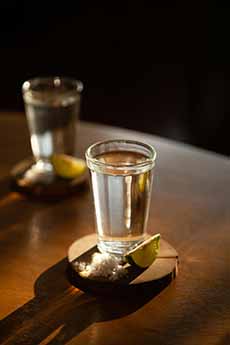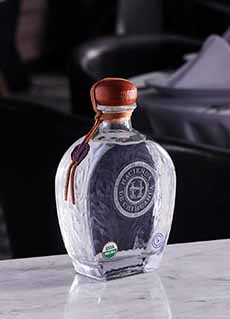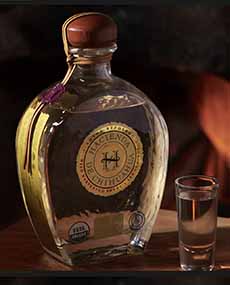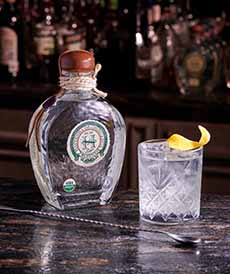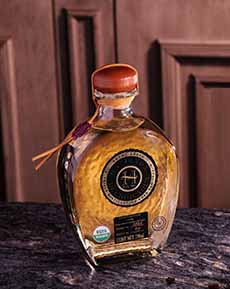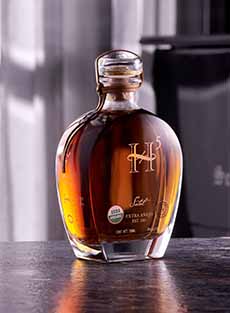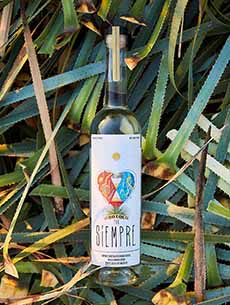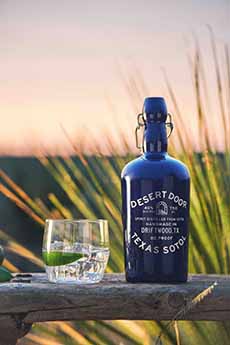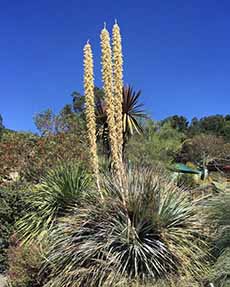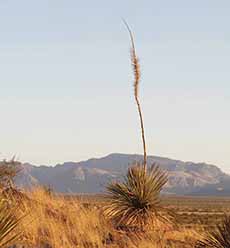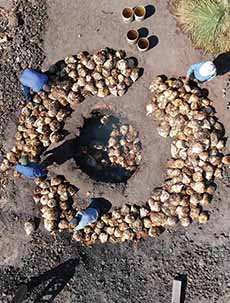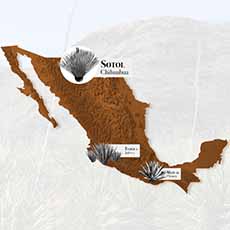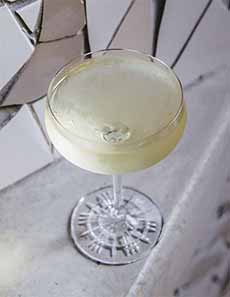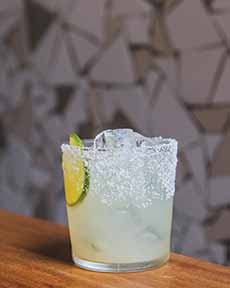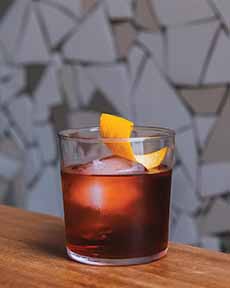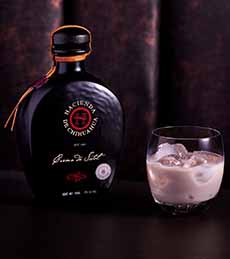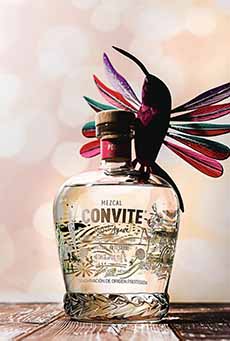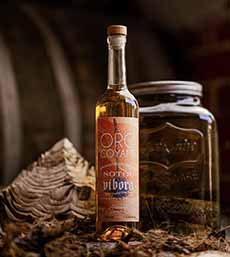What Is Sotol? A Mexican Spirit That Isn’t Tequila Or Mezcal!
|
|
While we have no Mexican or indigenous ancestry, we enjoy celebrating El Día de los Muertos (the Day of the Dead), which takes place every year on November 1st and 2nd. We like to take a day to remember our deceased ancestors, and we’ve developed a ritual in our small, New York City apartment. It usually involves of tasting of Tequila and Mexcal. This year we added sotol. What is sotol, we wondered, after receiving the offer of a bottle from the leading producer, Hacienda de Chihuahua, a family distiller in Delicias, Chihuahua, Mexico. > There’s more about the brand below. Sotol, one of six spirits distilled in Mexico, has long been under the radar. In fact, only two of the six—tequila and mezcal—have much recognition outside of the regions where they are created. We’d written a lot about tequila, mezcal, and about other indigenous Mexican foods and beverages such as pulque. But sotol, along with (three more traditional Mexican spirits below), was nowhere in our consciousness. That changed with when we had our first sip of sotol. It was an añejo (aged), and beautiful: flowers, grass, and vanilla on the nose, a complex palate barely sweet with a good herbal and peppery finish. Warm and comforting! We’re excited about this emerging category, which is our Top Pick Of The Week. If you’re a fan of tequila and mezcal, buy yourself a bottle. Your tequila- and mezcal-loving friends would like one as a gift. If your local liquor store or Uber Eats can’t get you a bottle, there are plenty of online sellers (the unaged Plata is about $35, the Anejo about $50). And, you can have a party to introduce your whole circle to a sotol tasting, by itself or along with tequila and mexcal. > The history of sotol is below. But let’s start with some comparisons of sotol and its two better-known cousins. It is made in very small quantities by a few families in northern Mexico. The word sotol comes from the Nahuatl (Aztec) word tzotolin, which means palm tree or “palm with long and thin leaves.” Sotol is distilled from the Desert Spoon plant (Dasylirion wheeleri), which is commonly called sotol or sereque. It is a succulent, but is not an agave**. The production processes of all three are similar: The catgegory of sotol received protected status under a Denomination of Origin in 2004. It is recognized by 27 countries, but not yet by the U.S. This means that American companies currently can produce a product called sotol. One such brand is Desert Door Texas Sotol, crafted in Texas. The Mexican D.O. requirements for sotol include: Sotol curado is a traditional way of flavoring sotol plata/bianco by infusing it with various ingredients, similar to mezcal curado. The sotol is infused with fruits (apples, peaches, raisins, and others), herbs, nuts, and spices. They are generally sipped like an apéritif before dinner (but feel free to enjoy it as a digestif, after dinner). A selection of these ingredients are left to infuse in the sotol for several days or weeks, so the flavors can blend. Sotol de víbora (rattlesnake sotol) is a meat-infused sotol which is infused with—yup—rattlesnake meat (photo #18). Take that, you puny mezcal worm! Tequila de víbora is also made, along with tequila con alacrán, which is infused with scorpions. These are novelties produced in tiny amounts. Pechuga is a traditional style of mezcal that is infused with chicken or turkey breast (pechuga means breast). Far from a novelty item, it considered one of the most premium expressions of mezcal, a complex, traditional, and highly regarded (photo #17). Like sotol curado, it infuses some of the same foods used in the offerings to the dead. Pechuga is traditionally distilled three times. The first distillation removes impurities, the second distillation infuses ingredients similar to those used in sotol curado: almonds, apples, cinnamon, herbs, pears, pineapple, plantains, plums, tejocotes, and wild rice, among other possibilities. The third distillation suspends a raw chicken or turkey breast in the still (pechuga means “breast” in Spanish). This is a traditional method of mezcal production that originated in Oaxaca. We will shortly review Convite brand pechuga, which uses turkey breast (and is perfect for Thanksgiving, no?). Hacienda de Chihuahua blends sotol with heavy cream, natural flavors, and sugar to make two expressions of cream liqueur: Nuez (pecan) and Chocolate. It is extraordinarily smooth and can be served as an after-dinner drink as well as a topping for ice cream and dense loaf cakes (carrot, pound, zucchini) or fruitcakes, instead of hard sauce. Founded in 1881, Hacienda Tabalaopa*** was the first New World effort of the family that founded Hacienda de Chihuahua more than a century later. Hacienda Tabalaopa is a 90,000 acre farm founded to distill brandy by the great-great grandfather of Hacienda de Chihuahua’s founders, the Elias Madero family, who realized the time was right to introduce the world to sotol. It was awarded a bronze medal at the 2006 San Francisco World Spirits Competition. Both Hacienda de Chihuahua (founded in 1996) and Hacienda Tabalaopa remain family-owned [source]. Hacienda de Chihuahua is now the world’s leading producer of sotol. The brand was the first to export sotol globally and is a market leader in the category. The Hacienda de Chihuahua product line includes: The Hacienda de Chihuahua brand is also: The Desert Spoon or sotol plant, Dasylirion wheeleri, is a large yucca-like plant that grows in (and is harvested in) the wild-harvested†. It grows to a ball-like shape with hundreds of three-foot-long narrow “ribbon” leaves with serrated edges (photos #9 and #10). The plant can live up to 100 years because its roots are left intact during harvesting. It is native to, and grows wild in, three northern states of Mexico (Chihuahua, Coahuila, and Durango) as well as in southwest Texas, and southern Arizona and New Mexico. The plant that belongs to the Asparagaceae family. Dasylirion/Desert Spoon is a relatively small genus of semi-succulents native to the Chihuahuan Desert. It flourishes in dry weather and rocky conditions, from flat to hilly or mountainous areas. The mature plant produces a 10-15 foot-high stalk densely covered with with cream-yellow flowers (photo #9). In addition to making sotol, the plant has long been used by indigenous people as a source of food‡‡. The tough leaves can be used to weave baskets and rope. Because the flower stalks are the perfect density for starting a friction fire (like sticks from a tree), they are harvested annually [source]. It is often used as a center piece in cactus gardens, and You can buy a starter plant here. Thanks to Back Bar Project for this information. Go to the website to find more information about them. In addition to mezcal, tequila, and sotol, Mexico produces: Pulque is also made from agave, but is different in these key ways: For possibly 1,000 years, sotol has been distilled by the Anazasis and Tarahumara tribes of northern Mexico. A non-distilled alcohol fermented like beer, may have been made as far back as 7000 B.C.E. [source]. The indigenous Rarámuri of Chihuahua fermented juice from the Desert Spoon piña into a beer-like alcoholic beverage as early as 800 years ago. Then in the 1500s, Spanish colonists introduced European distillation techniques that enabled production of a true sotol. Because of the effort to distill spirits rather than ferment pulque, sotol has been historically consumed by the wealthy and distinguished. That’s why there are only a few commercial examples in the market today. (In addition to Hacienda de Chihuahua, we counted Clande Sotol, Desert Door, La Higuera, Los Magos, and Sotol Por Siempre. Production isn’t more extensive because until very recently, sotol was largely unknown outside of its northern regions. The ongoing interest in artisanal foods, and the leadership of Hacienda de Chihuahua, will deliver this niche spirit the fan base it deserves. But as bartenders seek to enticing customers with something new, and more liquor distributors pick up brands, Americans will have more opportunity to “try it before you buy it.” (After tasting Hacienda de Chihuahua’s luscious Añejo, we’ve asked Santa for a bottle of Extra Añejo—called H5 at this hacienda—if he’s feeling flush.) The category also appeals to drinkers who care about organic products. Since the Desert Spoon plant is wild harvested (not yet cultivated), sotols are completely organic, grown without fertilizers or pesticides. |
|
|
______________ *From colonial times, Spain heavily taxed agave spirits in order to protect producers of Spanish wine and brandy. As with moonshine in the southern U.S., raicilleros built secret tabernas deep in the jungle. If they were discovered by revenuers, they were destroyed. After centuries of illegal production, the government recently granted raicilla a D.O., opening the door for commercial production. But an environmental concern is if it becomes popular, the harvesting of more types of wild agave plants would cause environmental impact [source and Claude.ai]. **Succulents have thicker, fleshier leaves or stems plus roots that are known for their ability to store water in their cells. Semi-succulents can store less water, but it’s enough to help them tolerate drier conditions. ***Tavalopa was the name the original Hispanic settlers gave to the area east of what is now the eastern bridge in Hillsboro—later called Happy Flats by Anglos. Some early history. †Wild harvesting is far more sustainable than farming or cultivating. ‡Terroir, pronounced tur-WAH, is the French word for soil, land or terrain. It can be loosely translated as “sense of place,” the sum of the effects that the environment has on the creation of what is grown there. It includes the special characteristics of soil, geology, aspect and altitude that give a cheese, grape, bean, or other agricultural product that result in its individuality. ‡‡The piña/crown is pit-roasted, peeled, crushed, mixed with water, and distilled to make sotol. Or, the baked crowns can be pounded into a pulp, and dried to make a cake-like food. The stalks can be boiled, dried, and stored as a vegetable. The flower stalks can be roasted in ashes and eaten as greens.. CHECK OUT WHAT’S HAPPENING ON OUR HOME PAGE, THENIBBLE.COM.
|
||
